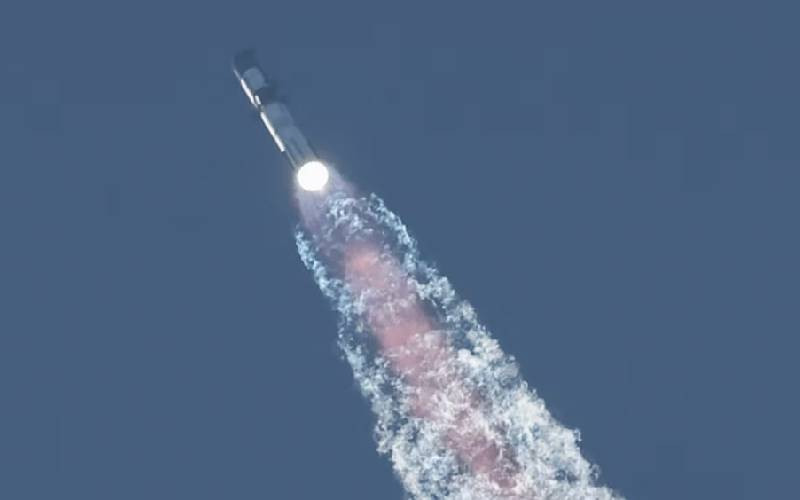×
The Standard e-Paper
Kenya's Bold Newspaper

SpaceX's uncrewed spacecraft Starship, developed to carry astronauts to the moon and beyond, failed in space shortly after lifting off Saturday, cutting short its second test but making it further than an earlier attempt that ended in an explosion.
The two-stage rocket ship blasted off from the Elon Musk-owned company's Starbase launch site near Boca Chica in Texas, helping boost the Starship spacecraft as high as 90 miles (148 kilometers) above ground on a planned 90-minute test mission to space and back.